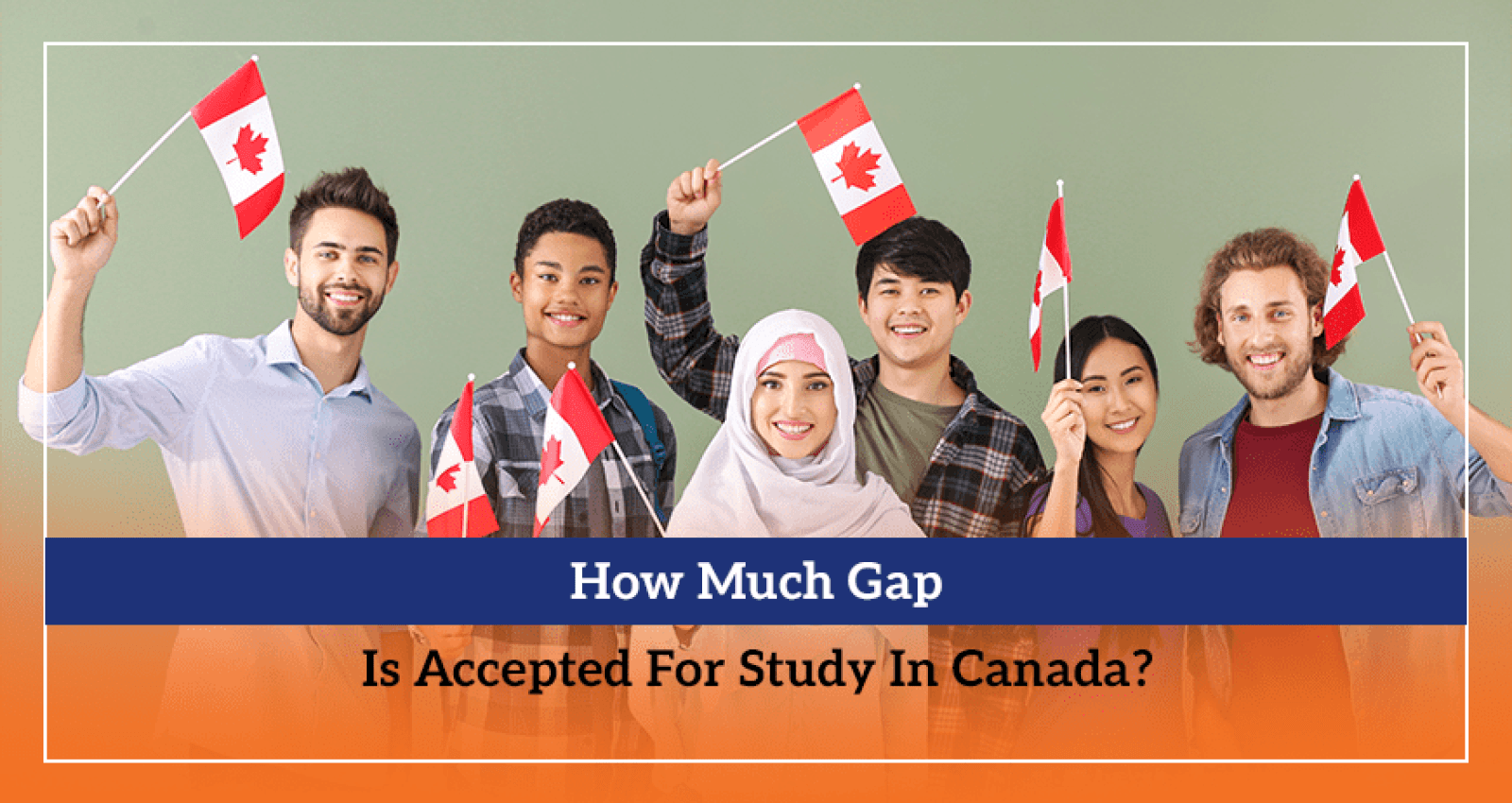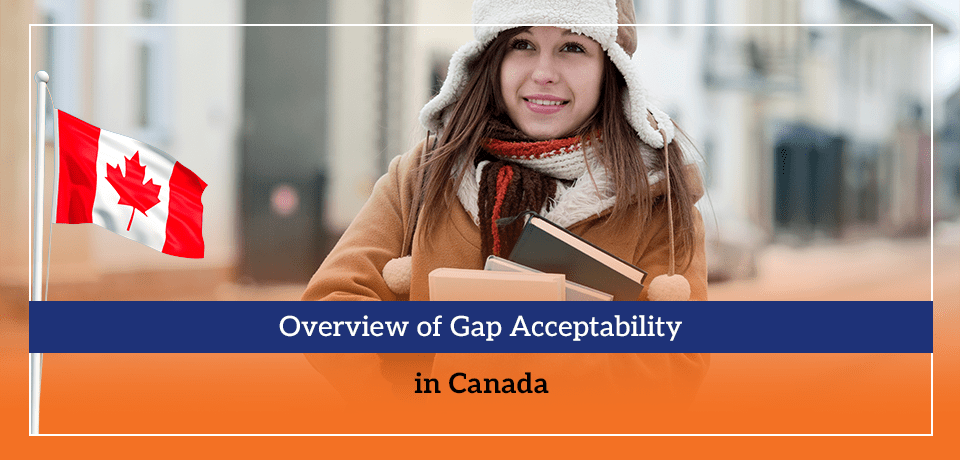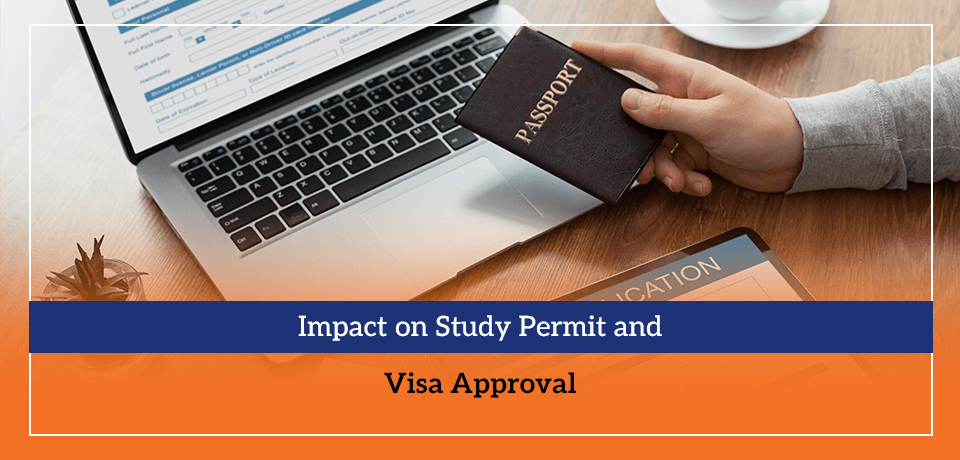
Did you know that many international students in Canada are accepted even with a study gap? This suggests that taking some time off from your studies before applying is not necessarily a problem.
So, how much gap is accepted for study in Canada? If you have the same question, you're not alone. Many even worry that study gaps might hurt their admission chances and visa approval.
A study gap doesn't have to be a barrier to your Canadian education dreams. With the right documentation, your study break can strengthen your application. It can also showcase your readiness for further academic success.
We've created this comprehensive guide to help you understand the Canada study gap policy. You'll learn about acceptable gap lengths, ways to explain your study break, and more.
A study gap is when you are not enrolled in a full-time academic program. For example, if you finished high school and didn’t start college for two years, that time is your study gap.
Students take breaks from education for various legitimate reasons:
Canadian universities and immigration officials carefully review study gaps. They want to see if you are ready for academic success. They review your gap to understand your learning or personal growth during that time. A well-explained gap, accompanied by proper documentation, can strengthen your application.
They mostly want to know:

Different programs have different expectations regarding the maximum gap accepted in Canada:
|
Program Level |
Acceptable Gap |
Special Considerations |
Documentation Needs |
|
Undergraduate |
1-2 years |
✓ Generally accepted without concerns |
Basic explanation and proof of activities. |
|
Postgraduate |
2-5 years |
✓ Acceptable with relevant work experience |
Detailed work documentation and relevance to the program. |
|
Any Level |
Longer gaps |
✗ Requires thorough justification |
Comprehensive evidence of continuous learning. |
Policies on study gaps differ across institutions:
Longer gaps can be acceptable with proper justification for study gap:
Canadian institutions are flexible when it comes to study gaps. Even if you have a 2-year or 5-year gap, you can still be accepted. What matters is how you used that time. If you stay busy with learning or working, it can work in your favour.
A 1-2 year break is generally acceptable for most Canadian institutions. Have you used this time to:
Most admissions committees view these productive short gaps positively.
The acceptance of a long study gap (3-5 years or more) depends on:
Different programs assess backlogs and study gaps differently:
|
Program Type |
Short Gap (1-2 years) |
Medium Gap (3-5 years) |
Long Gap (5+ years) |
|
Undergraduate |
Highly acceptable |
Requires explanation |
Challenging but possible |
|
Master's Programs |
Acceptable |
Often favourable with relevant work |
Acceptable with strong justification |
|
Technical Diplomas |
Acceptable |
Acceptable with skill maintenance |
Requires bridging courses |
|
Professional Programs |
Varies by field |
May require updating prerequisites |
May suggest preparatory courses |

A study gap might influence your study permit and visa approval as well. IRCC assesses whether you stayed engaged through work, courses, or skill development.
The IRCC study gap rules are an important consideration. IRCC reviews your gap when processing visa applications, focusing on:
Your documentation is critical for the study gap documentation requirements. Typically, they are:
Green Flags (Positive Indicators) |
Red Flags (Warning Signs) |
|
✓ Continuous employment with progressive responsibility |
✗ Unexplained periods within your gap |
|
✓ Relevant certifications during your gap period |
✗ Frequent job changes without clear progression |
|
✓ Complete documentation for the entire gap duration |
✗ Lack of documentation for claimed activities |
|
✓ Clear connection between gap activities and study plans |
✗ Inconsistencies in your timeline or explanation |

As we said, justifying your study gap is important for a strong application. Your SOP and statements of purpose do this for you. A well-written statement can show your commitment to learning and readiness to continue
Your SOP for gap explanation should:
Strengthen your application with employment evidence:
Emphasise both technical and soft skills gained during your gap:
If your gap resulted from personal circumstances:
Show how your gap activities complement your chosen field:
Work experience after graduation gap can be a significant advantage:
Strengthen your application with continuing education:
Create clear, professional documentation:
Mature students bring valuable experience to their studies. If you're applying with a study gap, focus on how your skills and knowledge make you a strong candidate. Here’s what you can do:
As a mature student visa in Canada applicant:
Secure strong endorsements:
Many opportunities exist specifically for non-traditional students:
|
Personalised Gap Assessment Checklist |
|||
|
Gap Duration |
Required Documentation |
Special Considerations |
Level of Explanation |
|
1-2 years |
Basic employment records, a brief explanation letter |
Generally straightforward |
Low to moderate detail |
|
3-5 years |
Detailed work history, recommendations, and a gap explanation letter |
Focus on skill maintenance |
Moderate to high detail |
|
5+ years |
Comprehensive career documentation, personal statement, and academic readiness evidence |
Consider bridging courses |
Very detailed explanation |
Create a clear timeline of your gap activities:
|
Time Period |
Activity |
Documentation |
Skills Gained |
Relevance to Program |
|
Jan-Jun 2023 |
Marketing Intern |
Certificate, Letter |
Digital marketing, Data analysis |
Directly relevant to the Business program |
|
Jul-Dec 2023 |
Online Courses |
Certificates |
Programming, Project management |
Demonstrates continuous learning |
|
Jan-Jun 2024 |
Family Care |
Reference Letter |
Time management, Resilience |
Shows character and responsibility |

Yes, a long gap does not mean rejection. Canada immigration gap acceptance depends on how well you document. You need to show that you were learning or working during this time. A strong explanation with proof helps your chances.
Yes, most colleges in Canada accept a 2-year gap after high school. They see it as a time to learn new skills or gain experience. If you did productive activities, it will support your application.
Important documents include job letters, course certificates, and volunteer proof. Medical records may help if health was a reason. A clear gap explanation letter is also important.
Yes, they can. Taking courses shows you are still learning. Online or part-time studies prove your interest in education. This makes your gap more acceptable.
Not really. If you use your gap time wisely, employers will value your skills and experience. If your gap helped you grow, it won’t hurt your job chances.
Yes, a 3-year gap is usually fine for postgraduate programs. If you worked or studied during this time, your chances improve. Keep documents to prove your activities.
Yes, but you need strong evidence to justify the gap. Work experience or additional studies can be beneficial. A well-written explanation is important for approval.
Many colleges in Canada accept study gaps. Some flexible ones are Centennial College, Humber College, and Algonquin College. These schools offer professional programs that accept students with gaps.
It is possible in rare cases, but you’ll need very strong proof, such as documented career progression, advanced certifications, or continuous professional development. Many institutions may recommend bridging or preparatory courses before admission. Visa officers will expect a very clear explanation of why you’re returning to studies after such a long time.
Yes, Canadian universities and colleges accept international students with gap years. Many universities and colleges in Canada are open to international students who have taken a gap year.
It depends on the admission policies of the universities or colleges. Some have stringent gap year policies, while others are flexible. However, students with a 2-year gap in undergraduate studies and a 5-year gap in postgraduate studies are generally accepted.
Taking a gap year usually won't affect your chances of getting a study permit in Canada. But you may have to explain why you took a gap year in your admission application.
A study gap of up to 2-3 years after 12th grade is generally acceptable for undergraduate programs.
To cover a gap for a study visa in Canada, provide valid reasons such as work experience, internships, skill development courses, or personal circumstances. For colleges and universities, include documentation and a clear explanation in your Statement of Purpose to demonstrate continuous learning or relevant activities during the gap period.
If you take a gap year before studying in Canada, you can usually work in your home country or elsewhere where you have legal work rights. In Canada, you can only work if you already hold a valid study permit or work permit. Once admitted to a Canadian institution, most students are allowed to work part-time during studies and full-time during scheduled breaks.
Generally, Canadian institutions accept up to a 2-year study gap for undergraduate programs. A 4-year gap may require a strong justification and supporting documents to be considered.
A 15-year study gap is highly uncommon and usually challenging. Only a few programs may consider applicants with such long breaks, and only if supported by exceptional justification, extensive work history, or professional achievements. Strong documentation and a compelling Statement of Purpose (SOP) are essential, and bridging courses may be required.
For master's programs, Canadian universities generally accept up to a 5-year study gap, provided there are valid reasons supported by documentation.
Knowing how much gap is accepted for study in Canada is important for international students. Canada's study gap policy generally allows 1-2 years for undergraduate courses. For postgraduate programs, 2-5 years is usually accepted. Longer gaps can also be effective if you provide strong evidence and a clear justification.
The key is to show that your gap was useful. If you learned new skills, worked, or gained experience, it can help your application. Proper documentation and a clear explanation will make a significant difference.
Canadian universities know that not everyone follows a straight path in education. If you prepare well and explain your gap effectively, it can even strengthen your application. Your experience can demonstrate growth, real-world skills, and a clear goal for your studies.

December 13 2025

December 06 2025

November 29 2025
Author: Dr Mohammad Shafiq
As a university graduate, you have the theoretical knowledge, but what about the practice? This is why many students start asking, “can you... Read More
Author: Dr Mohammad Shafiq
Are you trying to figure out which are the best universities to study marketing in UK for 2026? If so, you are in the right place. This guide lays out... Read More
Author: Dr Mohammad Shafiq
For most applicants, the planning for UCAS (the central system for applying to UK universities) begins months before the cycle opens. With 2025 deadli... Read More